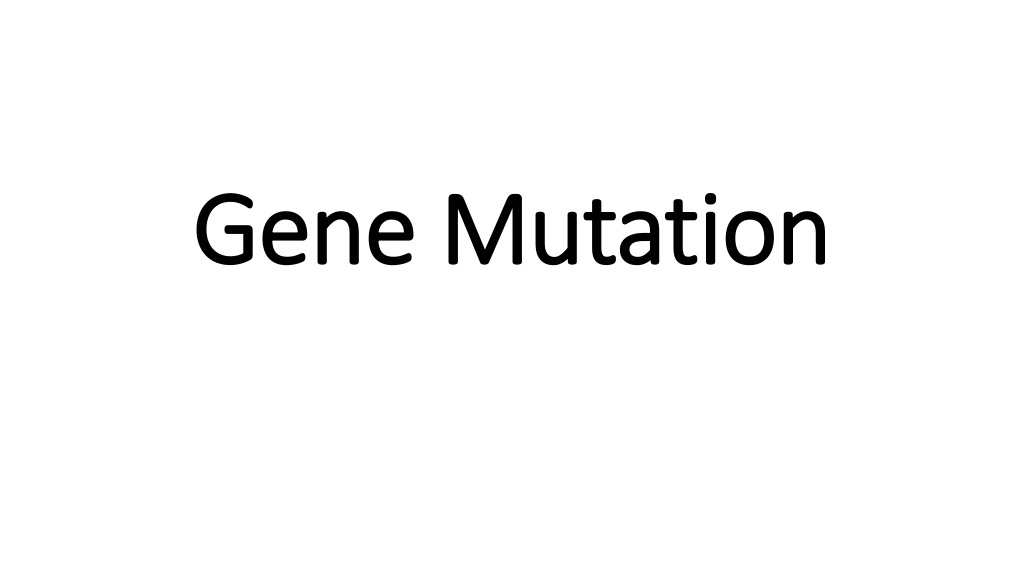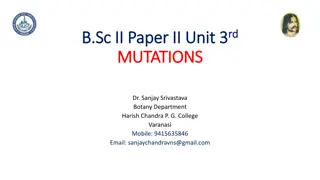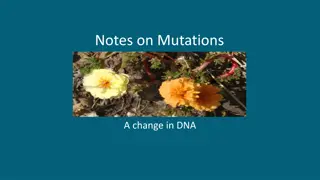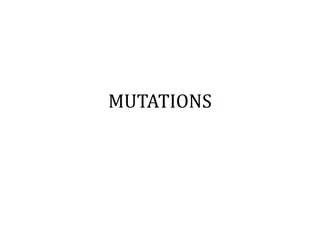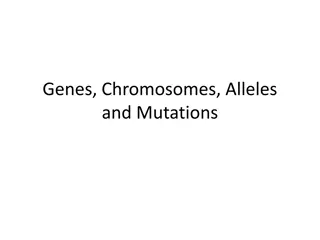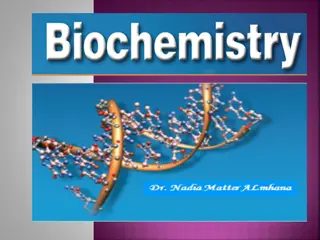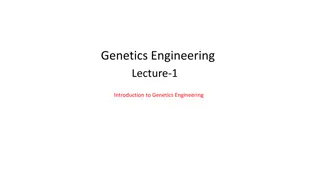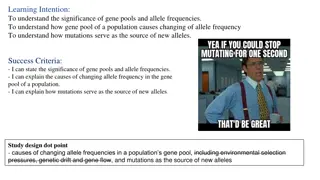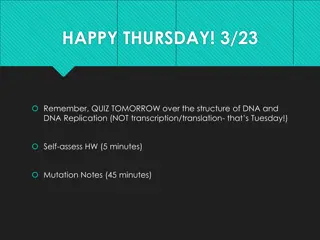Understanding Gene Mutations and Their Impact on DNA Sequences
Gene mutations are changes in the nucleotide sequence of DNA, leading to potential amino acid alterations in proteins. These mutations can occur due to replication errors or external factors like chemicals and radiation. Different types of mutations, such as base substitutions, transitions, transversions, insertions, and deletions, can affect genetic information differently. While some mutations are silent with no amino acid changes, others like missense mutations can alter protein function. Understanding these mutations is crucial in studying evolution and genetic diseases.
Download Presentation

Please find below an Image/Link to download the presentation.
The content on the website is provided AS IS for your information and personal use only. It may not be sold, licensed, or shared on other websites without obtaining consent from the author. Download presentation by click this link. If you encounter any issues during the download, it is possible that the publisher has removed the file from their server.
E N D
Presentation Transcript
Gene Mutation Gene Mutation
Mutation = change(s) in the nucleotide/base sequence of DNA; may occur due to errors in DNA replication or due to the impacts of chemicals or radiation to the DNA molecule Mutation may result in coding sequences for new amino acids in proteins or not! Mutations can occur due to errors during DNA replication (replication-dependent mutations) Mutations can also occur independently of DNA replication (replication-independent mutations) Mutagens, such as UV rays and chemicals, can cause mutations May occur in somatic or germ-line cells: Somatic mutations are not inherited and thus play no major role in evolution In cases of antibody formation and malignant transformation, somatic mutations are significant Only germ-line mutations are inherited and thus are important in evolution
A: Base substitution mutated base
A base substitution usually leads to base pair substitution GGG AGT GTA GAT CGT CCC TCA CAT CTA GCA GGG AGT GCA GAT CGT A base substitution CCC TCA CAT CTA GCA First cycle of DNA replication GGG AGT GCA GAT CGT CCC TCA CAT CTA GCA CCC TCA CGT CTA GCA GGG AGT GTA GAT CGT
Base substitution is of two types: Transition: Purine is replaced with a purine A G G A Pyrimidine is replaced with a pyrimidine C T C T
Transversions: A purine is replaced by a pyrimidine A C T C T A G G or a pyrimidine is replaced by a purine C G A G A C T T
Silent mutation Due to redundancy of Genetic Code, no change in amino acid sequence is produced!!
Missense mutation Missense mutation produces a change in amino acid sequence in protein product (Histidine in for Arginine); may change function of protein or may not!
Nonsense mutation Bad news! nonsense mutation produces a STOP codon within the mRNA transcript leading to a truncated protein. How short the protein product depends on where the STOP codon was produced within the mRNA transcript.
